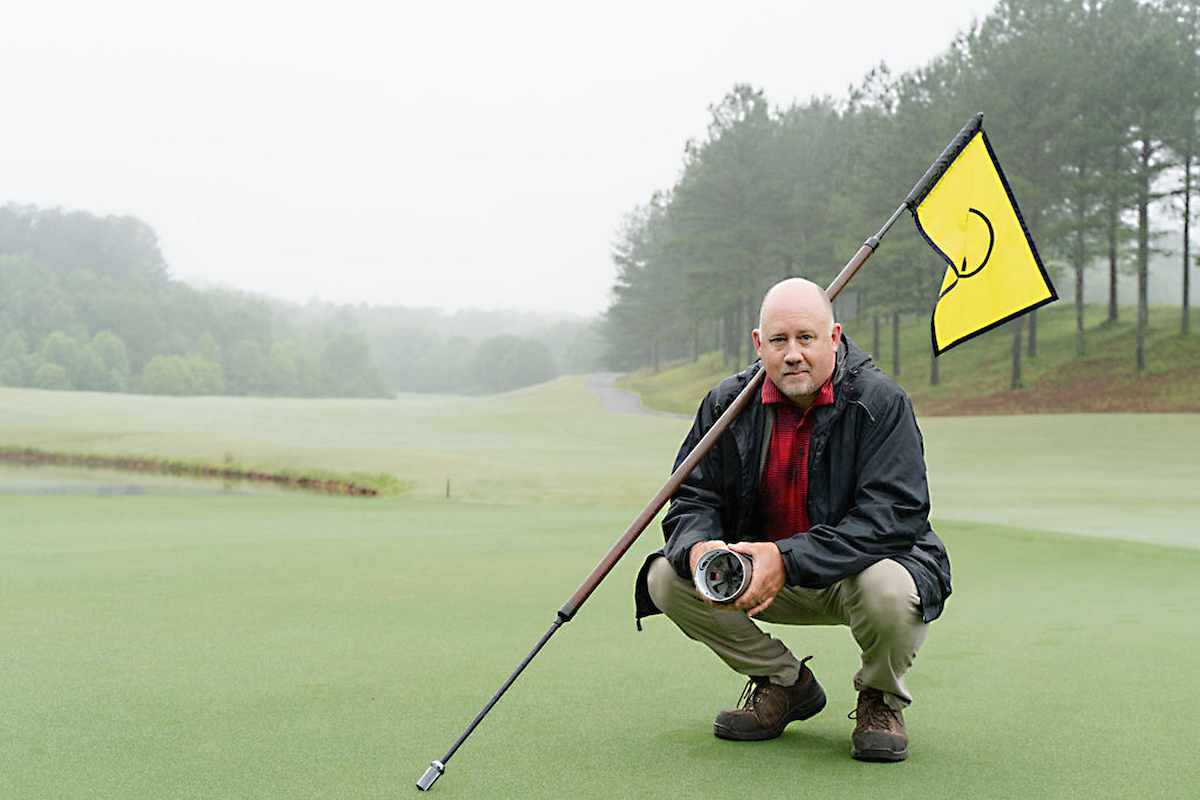Before you even plant a new pecan tree, you may have already
decided its success,
says a University of
Georgia scientist.
The variety you select and where you plant it are the
most critical choices homeowners
can make when planting pecan trees, said Tom Crocker,
an Extension Service
horticulturist with the UGA College of Agricultural and
Environmental Sciences.
“Homeowners can’t spray their trees the way commercial
growers do,” he said.
“They need to consider disease resistance as their No. 1
choice when they select a
variety.”
|
Rob Flynn |
| CHOOSE A SCAB-RESISTANT PECAN variety to help ensure a good crop, said Tom Crocker, a UGA horticulturist. Scab, shown on a leaf above can cause a tree to lose its leaves and decrease nut yields. The five most popular resistant varieties are Elliot, Stuart, Curtis, Gloria Grande and Sumner. |
Backyard trees mainly need a built-in resistance to scab,
a major disease of pecan
trees, Crocker said. For all practical purposes, that cuts
homeowners’ choices to five
fine varieties.
Elliott (Crocker’s personal favorite) is an
especially hardy tree with small,
round nuts, golden halves and excellent flavor, he said.
It’s very resistant to scab.
Stuart, a popular variety, has large, thin-shell
nuts with excellent kernels.
It’s scab-tolerant and a very productive tree.
Curtis, another very productive tree, yields
smaller nuts with excellent
kernels. It’s very resistant to scab.
Gloria Grande, a good producer, is another tree
that yields large nuts with
excellent kernels.
Sumner is a good producer with excellent kernel
quality. It’s late-maturing, but
very tolerant to scab.
“Those are the best choices of disease-resistant
varieties,” Crocker said.
“The best size is normally a 5- to 6-foot tree,” he
said. “This size
tree is large enough to have reserves to carry it through
some tough times.”
February and early March, he said, are the best times to
plant. But once you’ve got the
tree, you still have a critical choice to make: where will
you plant it?
“Probably the most important aspect of planting pecan
trees is to make sure they
have enough room to grow,” Crocker said. “It’s little now,
but it’s going to be
a big tree. Don’t plant pecan trees too close to buildings
or power lines. It’s best to
give them 40 to 60 feet on all sides.”
A pecan tree, he said, produces nuts on the ends of the
limbs. “If it doesn’t have
room,” he said, “it will stop fruiting and grow straight up
like a pine
tree.”
After you’ve bought a disease-resistant variety and
picked a roomy place to plant it,
dig a hole big enough — about 2 feet across and 3 feet
deep — to get the roots off to a
good start.
Be careful to plant the tree at the right depth.
“The problem most people have is they tend to plant too
deep or too shallow,”
Crocker said. “They need to take note of the dark area that
indicates how deep it was
planted at the nursery. Then plant it at that depth.”
Then there’s one more critical part of getting a good
pecan tree started.
“I can’t stress water enough,” Crocker said. “During the
first two years
of life, pecan trees should be watered weekly whenever it
doesn’t get adequate
rainfall.”
Anything that will help conserve moisture and lessen big
fluctuations in soil moisture
will help, he said. Good weed control around the base of the
tree is important.
“Mulching is the big thing,” he said. “That will pay off
more than
anything else. It controls weeds and conserves moisture.”




